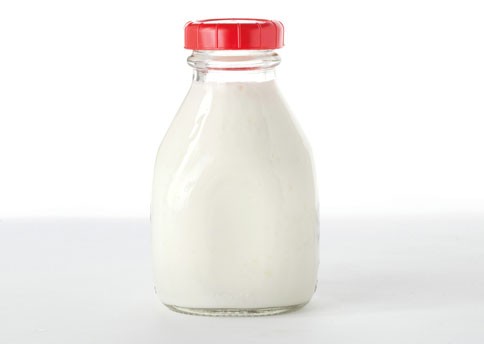The ins and outs of buttermilk
October 2, 2021 by DarciePancakes, Southern biscuits, cornbread – all benefit from the tangy punch of buttermilk. But not all buttermilks are the same, according to an article from Eater. The dairy product has morphed from its origins as a byproduct of butter making to a cultured product akin to kefir or yogurt.

Food historians theorize that buttermilk originated in eastern Europe as animal husbandry took hold a few thousand years ago. Unlike the warmer areas where dairy was already established, the cooler climate of Europe meant that milk could be left overnight, allowing the cream to float to the top. The cream was churned into butter, and the remaining liquid – buttermilk – contained useful properties. Most importantly, according to Harold McGee, the “remnants of fat globule membranes are rich in emulsifiers like lecithin, and make it especially valuable for preparing smooth, fine-textured foods of all kinds, from ice cream to baked goods.”
Mechanical cream separators meant that people no longer had to wait for the cream to rise to the top, which meant that the microbes that acted overnight were no longer acting on the buttermilk to give it tang. Today you are much more likely to find cultured buttermilk in your grocery store than “true” buttermilk. Regardless of how they get there, the acids in buttermilk reacts with leavening agents like baking soda to produce fluffy pancakes, mile-high American-style biscuits, and other baked goods. In addition, the acids provide a subtle tang that enhances flavor. I always have a carton of buttermilk in the refrigerator because it adds so much to myriad baked goods, and it keeps well beyond the stated “best by” date stamped at the top.
Photo of How to make your own buttermilk (a.k.a. liquid gold) from Bon Appétit
Categories
- All Posts (6940)
- Antipasto (2135)
- Author Articles (247)
- Book News (935)
- Cookbook Giveaways (983)
- Cookbook Lovers (257)
- Cooking Tips (109)
- Culinary News (299)
- Food Biz People (552)
- Food Online (791)
- Holidays & Celebrations (272)
- New Cookbooks (149)
- Recipes (1500)
- Shelf Life With Susie (231)
- What's New on EYB (133)
Archives
Latest Comments
- eliza on What foods do you look forward to the most for each season?
- kmwyman on Rooza by Nadiya Hussain – Cookbook Review and Giveaway
- Maryd8822 on The Golden Wok – Cookbook Giveaway
- Dendav on Danube Cookbook Review and Giveaway
- sanfrannative on Rooza by Nadiya Hussain – Cookbook Review and Giveaway
- darty on Danube Cookbook Review and Giveaway
- Atroyer7 on Danube Cookbook Review and Giveaway
- demomcook on What foods do you look forward to the most for each season?
- demomcook on Danube Cookbook Review and Giveaway
- Darcie on How cookbooks can help build resilience